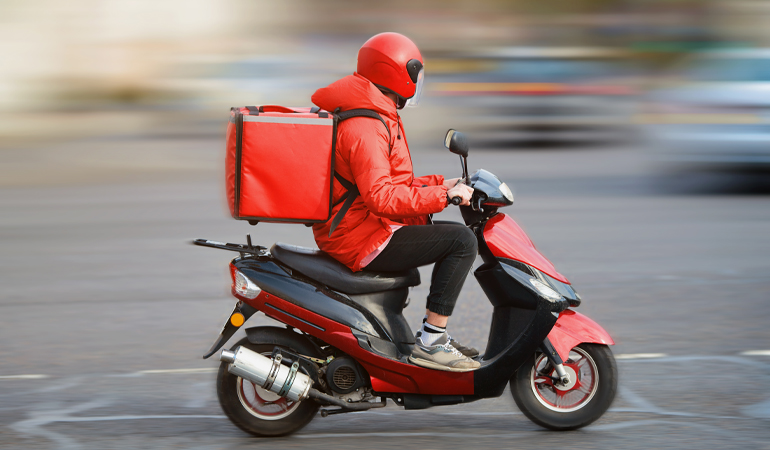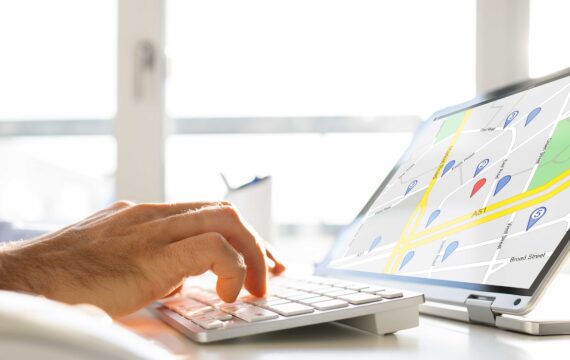The COVID-19 pandemic has taken its toll on the transportation industry. Along with workers calling in sick, transportation companies are experiencing heavy pressure from consumers. Demand fluctuations and product unavailability are constantly disrupting supply chains, making it increasingly harder to ensure timely last mile delivery. Meanwhile, customer expectations are high.
Many people staying at home demand extra delivery options and even more expect faster shipment. This is a challenge that transportation companies won’t be able to handle without dedicated last mile delivery software. So how is it possible to address this problem with technology? And what exactly can organizations do to make this process more efficient? Let’s talk about possible solutions.
What’s inside:
- Why does last mile delivery take so long?
- How can technology fix and add flexibility to last mile delivery?
- Why last mile delivery technology is worth every effort
Why does last mile delivery take so long?
Have you ever tracked a package that has been “out for delivery” for an unusual amount of time? Most likely, the culprit is inefficient last mile delivery. The final leg of the shipment process usually involves multiple stops with low drop sizes. This prolongs the supply chain and sabotages the best efforts of logistics companies, who ship goods across the country only to have them get stuck in the last few miles.
Last mile delivery problems are extremely common in rural areas, as delivery points are typically miles apart. Besides that, the drop rate is often just one or two packages, which is inefficient. However, the situation is hardly better in urban areas. While the distance between delivery stops is shorter in cities, you can hardly feel this advantage due to traffic congestion.
Data from Statista suggests that this issue is further fueled by the continuous rise of eCommerce retail sales in the US. Customers expect delivery not just fast but at a reasonable cost. So how can transportation companies meet that demand? The answer is complex, but it can be summed up in one word: technology.
Last mile delivery in the supply chain

How technology can fix and add flexibility to last mile delivery
The core objectives of any software-based last mile delivery solutions are simple: meet customer demand, cut costs, and improve profitability. How can last mile delivery technology achieve this? Take a look below.
Real-time order tracking, mapping, and route optimization through software
The key to fast delivery is planning. It doesn’t matter how well your driver knows the route. As soon as there’s an unforeseen obstacle, the delivery gets delayed. Without a plan backed up by relevant data, your driver will most likely spend time figuring out where to go and when to turn. Obviously, that hinders the entire transportation process.
The way out is to integrate last mile delivery software and cloud capabilities into your shipping operations. With these integrations, drivers will no longer be required to do guesswork as the system will handle the routing and ensure that map data is relevant at all times.
Last mile delivery software can plan routes taking into consideration traffic congestion, estimated times of arrival, and weather conditions. This data-driven approach to routing also allows for dynamic re-routing based on information foreseen by the system.
Providing your drivers with up-to-date weather, traffic, and stop proximity data will ensure on-time deliveries. Furthermore, not only will routes become more economical in terms of mileage but you’ll experience reduced fuel consumption per delivery while cutting operational costs.
Big data and predictive analytics as a means of route optimization
While big data and predictive analytics may seem completely unrelated to logistics, they’re often used in tandem to mitigate common last mile delivery tracking issues. By looking at reports without a proper analytics system, companies can spend months on end seeking a disruptive pattern and still end up missing important data.
Having a dedicated data science and big data systems in place can help you sift through information faster. You can scan hundreds of thousands of deliveries, generate reports based on GPS tracking data, and use these findings to make informed decisions. For instance, you can pick the most fuel-efficient route or prepare for higher order volumes during certain seasons.
Also, data gathered can be used to create a supply chain digital twin that can help you test and predict the outcomes of certain routes even more accurately. All of this will allow you to identify last mile delivery logistics operations that need improvements significantly faster.
Automatically batching SKUs through auto-dispatch technology
When handling the on-demand delivery of multiple stock keeping units (SKUs), order batching is essential. Typically, on-demand delivery is rushed, and there’s little to no time for manual batching. Therefore, deliveries are made more frequently than required, increasing delivery costs.
This lack of batching results in delays, as small groups of products means fewer orders are fulfilled in a single delivery window. Automated dispatching systems can handle batching for you in a fast and accurate manner.
Properly batched orders paired with GPS asset tracking tools allow you to decrease the number of drivers you put on the road and see how many items are sent. This will enable you to perform on-time deliveries at scale without the whole operation looking like a complete mess.
It will also open new business opportunities. If a company can reduce the number of drivers required for their current delivery capacity, they can start working on expanding their geographic delivery range and, eventually, grow their sales.
Seamless data flow through IoT and sensors
Supercharging your supply chain into a cloud structure using interconnected devices is a must for any logistics company. Location intelligence systems allow you not only to track vehicles on the map but keep tabs on the entire fleet operation.
Small devices embedded in vehicles and coupled with fleet management software will allow you to trace the entire logistics process. Sensors provide data on whether a delivery is on schedule, whether it was successful, and what issues might be coming — all in real time and through video telematics if needed.
Another use of IoT sensors, albeit not directly tied to last mile carrier tracking, is in retail chains. Dedicated IoT devices for logistics can identify when a retailer has too few products and automatically order new supplies from the nearest distribution center using location-based services.
Having end-to-end visibility of operations will allow companies to aggregate data and devise better routing plans as well as identify bottlenecks in their supply chains. Automated onboarding can also be done through IoT devices.
Companies can use small circuitry to reduce the need to send and verify data manually. This can result in huge time savings, as validated transportation permits can be transferred to short-distance drivers much faster than long miles, meaning goods will be delivered on time.
Indoor navigation
AI and urban mobility are working in tandem to make indoor navigation even better. Artificial intelligence can help determine what product a customer might need, whereas Beacons, Wi-Fi routers, and sensors help guide them to the right shop.
AI also allows transportation companies to make last mile delivery more cost-effective. Sensors can provide a detailed map of a shopping mall, hospital, or other intricate indoor space to accelerate navigation. This helps companies implement better indoor delivery and navigation.
Couriers are no longer required to search for delivery points, nor do they need to worry that there have been changes to a building’s layout. And if internal navigation isn’t enough, delivery drones can always reach the destination much faster.
Why last mile delivery technology is worth every effort

Technology is changing how transportation operations are carried out. Smart devices powered by fleet management software will not only help transportation companies with last mile tracking but allow for the delivery of additional goods. As more time-saving ideas are brought forward, most if not all are directly tied to technology.
Helps with parking
Often, drivers have to deal with a lack of dedicated parking spots, which results in disruptions and delays. Drivers needlessly search for a spot instead of recharging their batteries. However, with technology such as location intelligence, getting relevant data about parking lot availability is easy and time-efficient.
Privacy by design
When drivers don’t have access to cloud transportation software, they’re forced to use conventional map systems such as Google Maps. This not only violates privacy but violates GDPR requirements as well. Specialized technology eliminates this problem.
Meeting demand
Having several last mile delivery logistics solutions in place will allow companies to better meet demand. The formula is quite simple: The more technology is incorporated into the logistics chain, the more demand can be met. Even small systems such GIS and location-based services can have a huge impact on your performance. And the more demand is met, the more transportation capabilities are open.
Bottom line
Supporting your drivers as well as your vehicles with technology is key to solving last mile delivery problems. The longer your drivers are working with you, the better they know the city. As a result, the better the delivery service they can provide. In turn, IT systems need to support flexibility and implement it where previously it wasn’t possible.
It wouldn’t hurt to provide your drivers with extra guidance to achieve better delivery. A mark of good service can go a long way and dedicated last mile delivery software can help you maintain or even achieve customers’ loyalty. Embracing technology and deeply incorporating it into your supply chain is key to making more deliveries.
Looking to solve your last mile delivery problem with technology? Get in touch with our team to uncover opportunities for your business!


